10 Secular Homeschool Easter Science Experiments

Ready to explore science this spring with some super fun Easter science experiments? The following are Easter activities teens would enjoy too!
Let's get ready to get messy and have fun while doing these awesome homeschool science experiments. These experiments can go hand-in-hand with NatureGlo's post, How to Easily Create a Secular Homeschool Easter Unit Study.
#1 Crystal Egg Geode Experiment
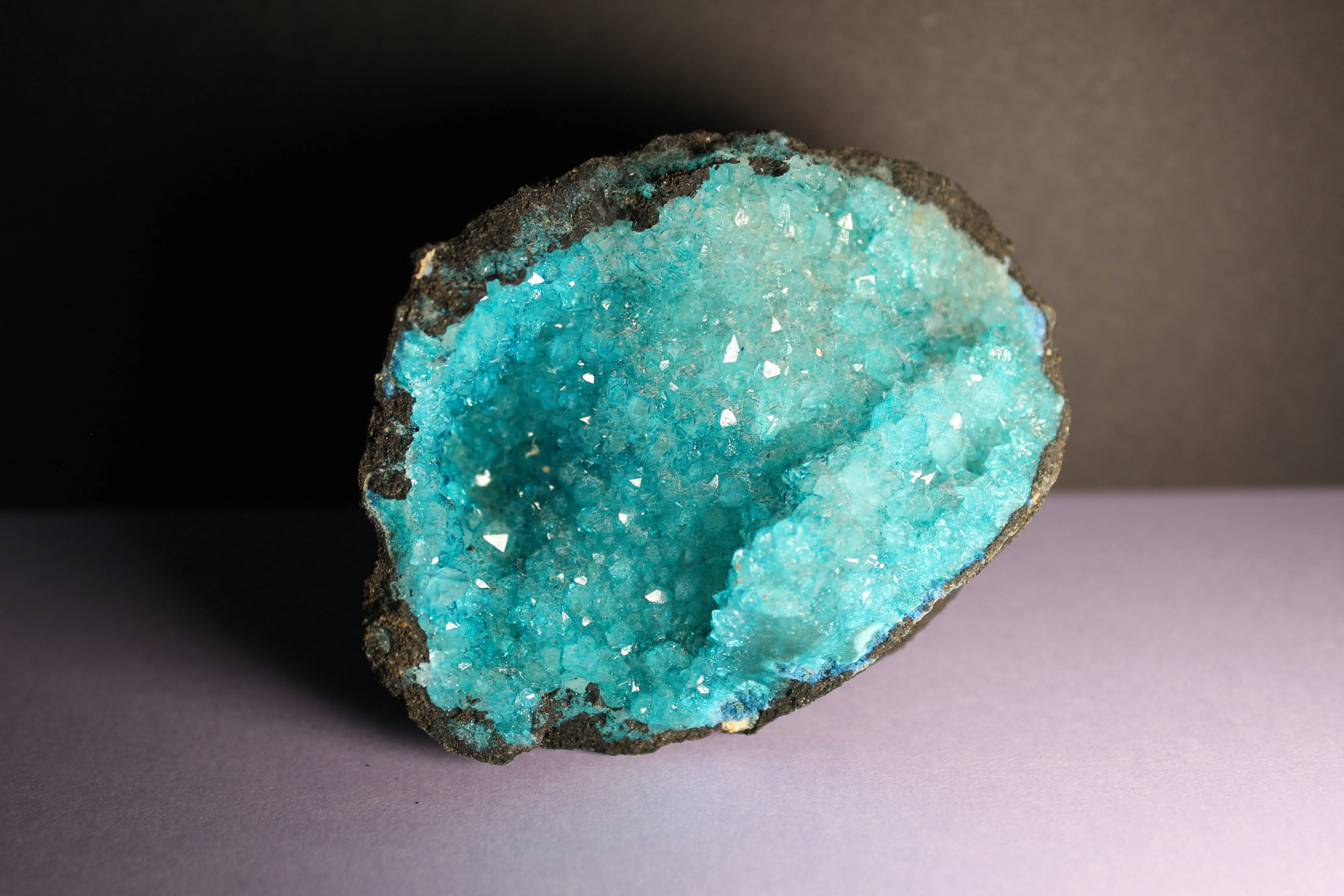
Yes, I know. This is a real geode, not what a crystal egg geode looks like, but, this is what we're mimicking with this experiment.
The Science Behind the Crystal Geode Experiment
The crystal egg geode experiment is an exploration in rocks and minerals helping kiddos learn about how geodes are formed in nature.
What are geodes?
Geodes are small rock cavities lined with mineral crystals that are typically found in limestone or shale.
The experiment process typically involves adding alum powder or epsom salts to hot water which creates a super saturated solution. Kids learn about sedimentation.
Sedimentation is the process where particles (solute) are suspended in a fluid (solvent), accumulate. Through the process of gravity, the sediment falls to the bottom and crystalizes. It is a similar process that happens with geode formation in nature.
What does "super saturated solution" mean?
It means that there are suspended particles of alum powder in the solution. As the solution cools off, the alum particles fall to the bottom and slowly crystalize.
Check out these websites with great images of the crystal egg geode.
- Experimentarchive.com - Crystal Egg Geode (great images with a video; wished the video explained the process better with the ingredients).
- Parents.com - How to Make Crystal Geode Eggs - Super images with great instructions and explanations. Epsom salt is used as the solute instead of alum as in #1.
- Marthastewart.com - Crystal Egg Geodes A short and sweet article helping you get on your way fast with this experiment.
Here's an easy to follow video about crystal egg geodes. He uses alum as the main solute.
#2 How to Create Marbled Easter Eggs
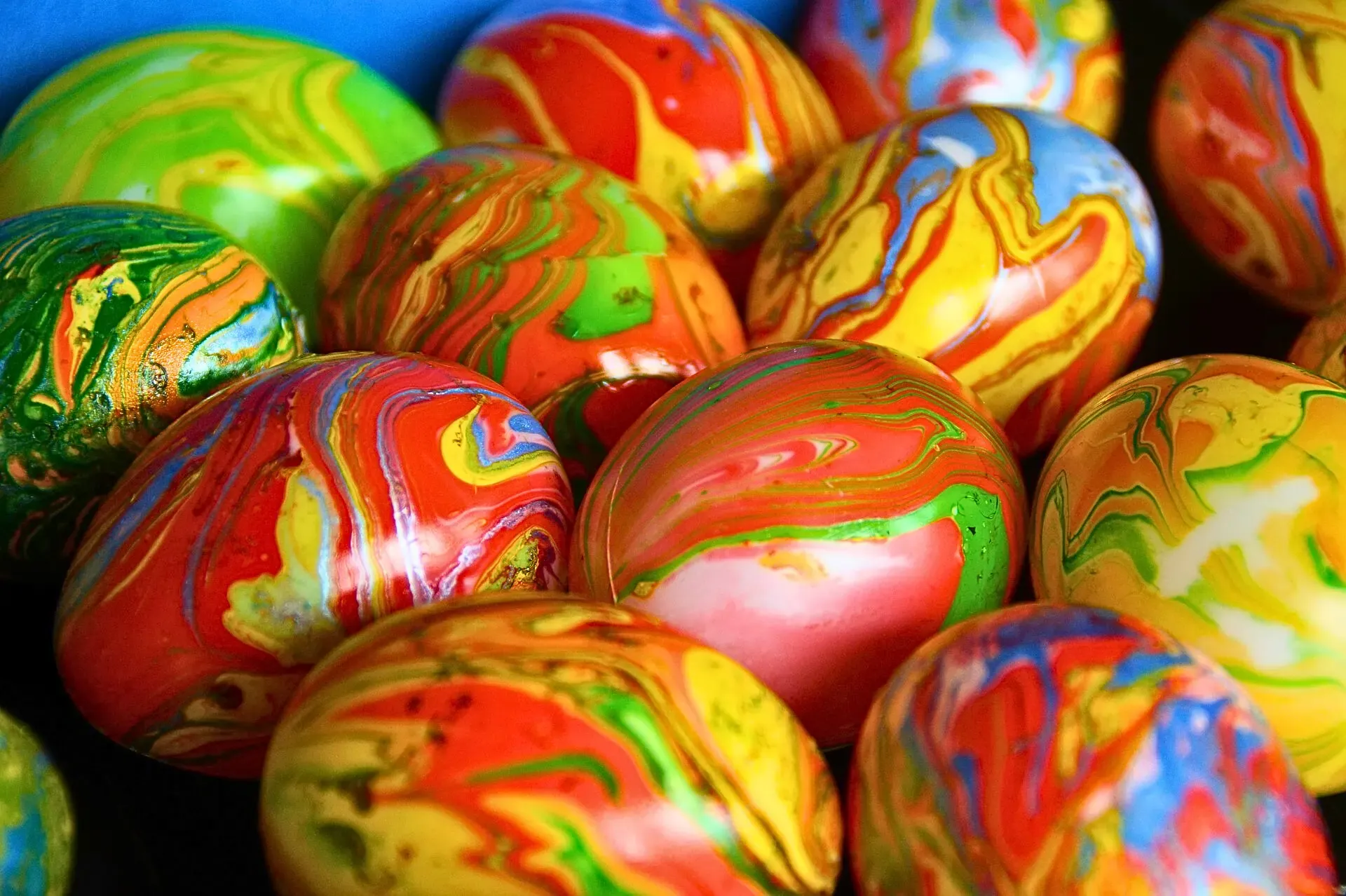
The Science Behind the Marbled Easter Egg Experiment
The science involved with marbled egg dying includes an exploration of acid found in the food coloring. The vinegar helps the acid dye bond to the egg in the beautiful swirled fashion.
The less dense floating oil part of the experiment gives the food coloring the marbled effect. The olive oil prevents part of the dyes from sticking to the egg therefore giving them the gorgeous marbling effect.
Have a look at the following websites and choose which instructions are best for your homeschool.
- Happyholigans.com Marbleized Easter Eggs with Oil, Vinegar and Food Coloring This post has great images with detailed and easy to follow instructions.
- Littlebinsforlittlehands.com Marbled Easter Eggs with Oil and Vinegar - Easy to follow instructions with great photos.
Watch the video below from Little Bins for Little Hands.
Hey, looking to create a great Easter unit study? Grab my free unit study planner below to help you on your way.

#3 Jelly Beans and Peeps STEM Project
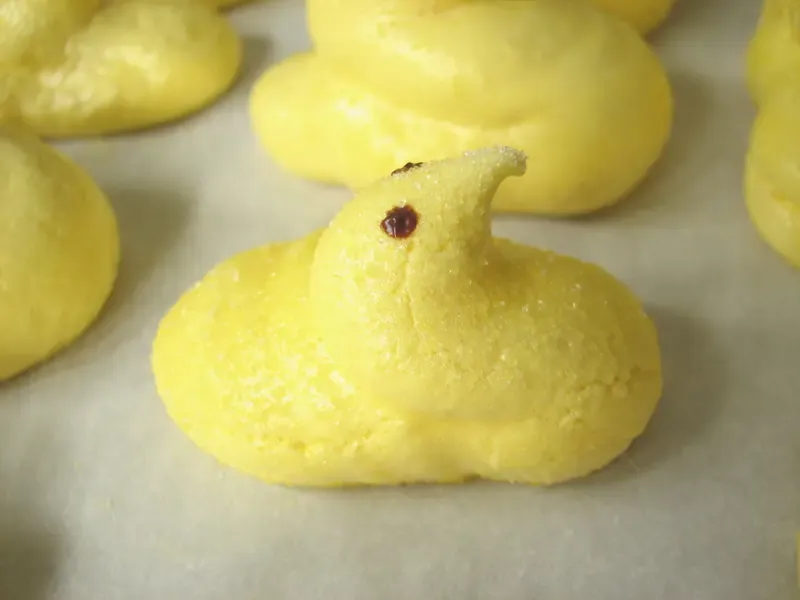
How the Jelly Beans and Peeps STEM Project Works
What is STEM?
STEM stands for Science, Technology, Engineering and Math. STEM is actually the natural exploratory and experimental way that children learn through play. Kids are always experimenting and exploring when they're not being forced through a curriculum.
The Jelly Bean and Peeps STEM project allows kids to create a structure with jelly beans (or gummies for younger learners because they're softer), peeps and toothpicks. The kids push the toothpicks into the candy and create unique stable structures to "protect" their peeps.
CLICK HERE for the Jelly Bean and Peeps STEM Project.
#4 - Egg in a Bottle Experiment

The egg in a bottle science experiment is a childhood favorite because of its magic-like appeal. Back in the early 2000's I had a high achieving student in my grades 3 - 5 classroom named Daniel. Daniel's parents were scientists. I arranged to have Daniel's parents come to my classroom to do a science show for my students. I'll never forget when the mom and dad performed the egg in a bottle experiment complete with white lab coats on. When the egg got magically sucked into the glass bottle, we were wowed and mesmerized by it. It was our all time favorite science moment among myself and my students.
The Science Behind the Egg in a Bottle Experiment
Here's how the egg in a bottle science experiment works. The "sucking egg in a bottle" science experiment combines the following three gas laws: Charles's law, Boyle's law, and Gay-Lussac's law. The law states that the temperature, pressure, and volume of a gas are related.
Cold air molecules contract or get smaller. When the air inside of the bottle is heated, the tiny air particles, or molecules inside of the bottle spread out, thus increasing air pressure. The greater air pressure outside of the bottle actually pushes the egg into the bottle.
Interestingly, I had thought that it was the inside heated air pulling the egg inside of the bottle. Nope, not so!
Watch the two videos below to learn how to do this at home or in the classroom with your kids.
Check out the following links below for two different egg in a bottle experiment instructions.
- Scienceworld.com Egg in a Bottle - Short and sweet well laid out instructions for the egg in a bottle experiment.
- Kids.nationalgeographic.com Bottled Egg Trick - Short and sweet egg in a bottle science experiment instructions written for kids to follow safely without use of fire.
#5 Expanding Peeps Experiment
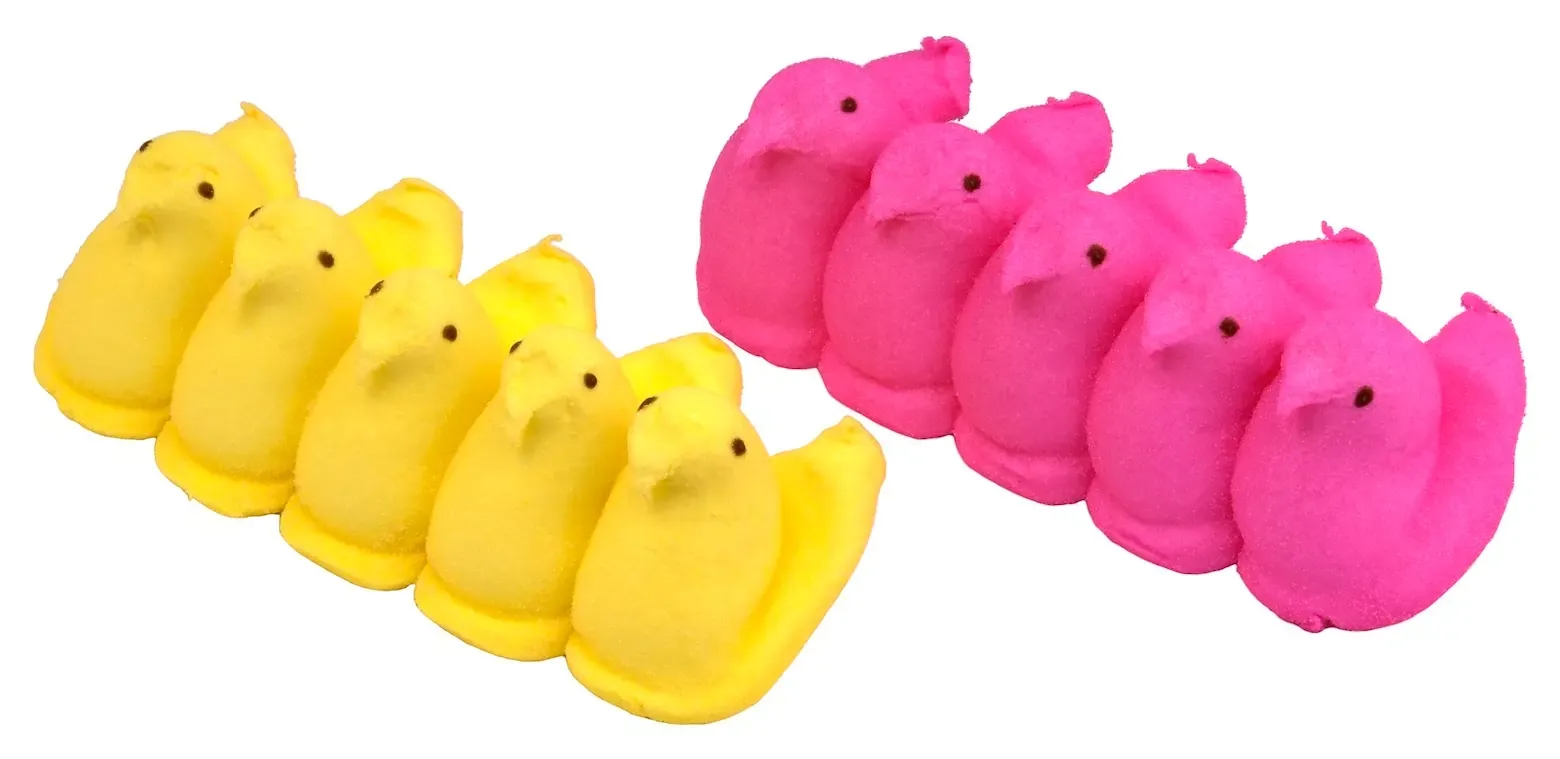
The Science Behind the Expanding Peeps Experiment
Peeps are a popular gelatinous Easter candy made up of sugar, corn syrup, gelatin and pumped with compressed air to keep its shape. When they're placed in the microwave and super heated, the heat molecules move faster and further apart expanding the air pockets so that the peeps become gigantic.
Watch the video below to see the peeps in a microwave experiment in action.
Have a look at the following two website links and try out the expanding peeps experiment.
- The Homeschool Scientist.com - Peeps Science Experiment: Change in Mass This post has great instructions with illustrations. I like that it includes a data activity for kids to apply math to the experiment. Some kids might enjoy or hate the data collecting activity since it entails math. If they hate it, perhaps let them try completing 1 - 2 rows of the stats sheet AFTER you model the first part of it for them or with them.
- Smithsonianmag.com Jousting Peeps Experiment - This is a different slant on the microwaved expanding peeps experiment. This time, it's a contest between two tooth-picked peeps, a stale one and fresh one, in a contest to see who can pop, or "joust" the other peep first. The peep that gets popped is the loser.
#6 - Easter Slime Recipes
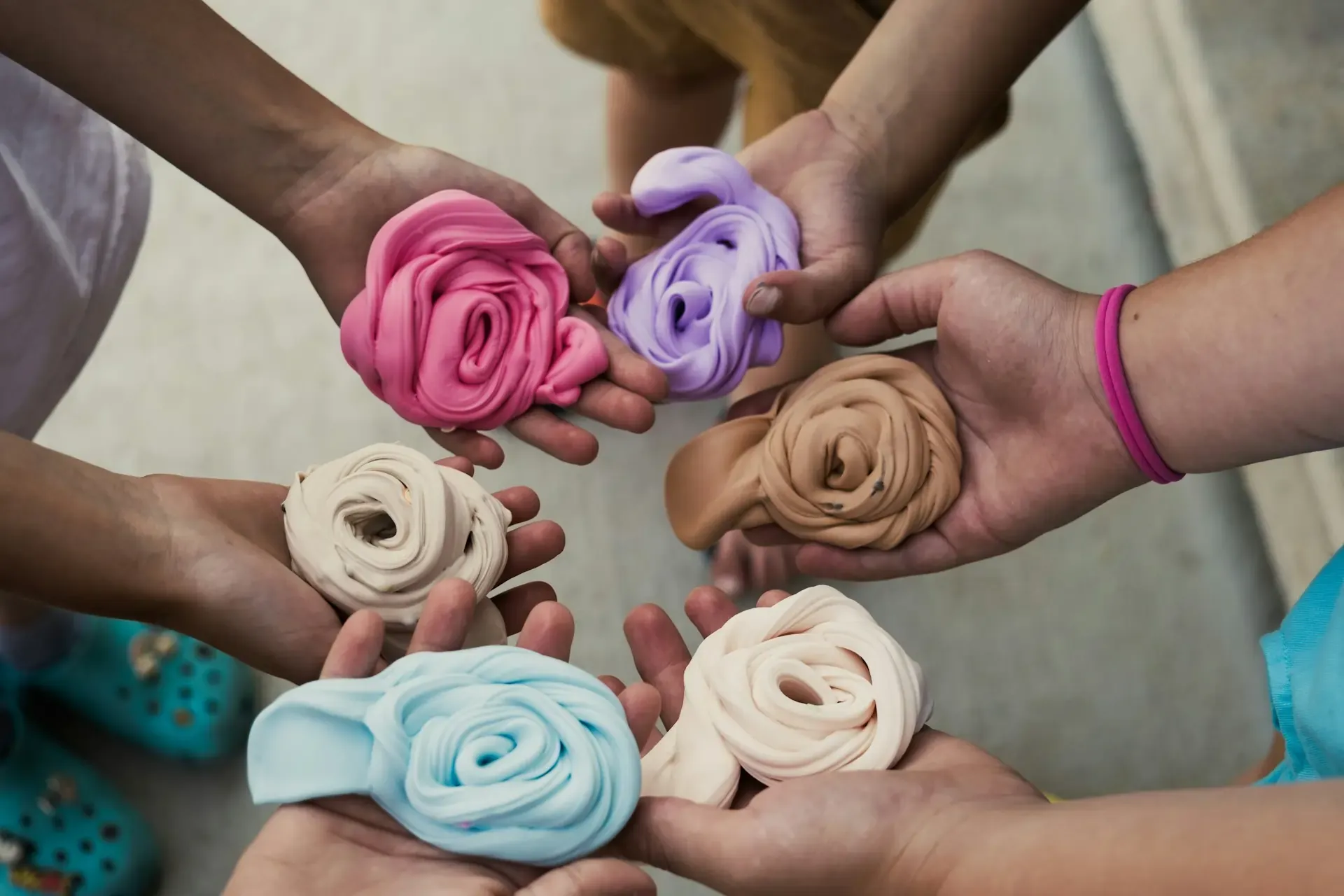
The Science Behind Easter Slime
There are so many Easter slime recipes available to be Googled online that it can get overwhelming. Basically, the science involved with any Easter slime recipe is chemistry. Whatever Easter slime recipe that you choose, the ingredients will determine the chemical slime creation.
As homeschool parents it can be tough to just enjoy the learning journey. Home and school educators are notorious for getting stuck in the weeds of academia and the age old questions of, "am I doing enough for my kids," or, "Am I ruining my kids education?". Don't give into the plague of these questions.
After all, most of us are the product of the traditional education system which is all about the tests, grades and push to get kids to go to college with the belief that they'll never succeed in the real world if they don't go to college. How about enjoying the journey of a full sensory experience with the chemistry it takes to enjoy simple fun Easter slime? See what deeper explorations the kiddos come up as they deep dive into the various recipes that they can explore and create all the different fun Easter slimes.
Watch the following fun cotton candy slime video below.
Check out the following links to some creative Easter Slime recipes.
- Littlebinsforlittlehands.com Easter Slime recipes - Enjoy exploring this vast post giving some incredibly fun Easter slimes recipes.
- Thechaosandtheclutter.com Easy Easter Slime Recipe - This post features one recipe.
#7 Egg Strength Experiments
The Science Behind an Egg's Strength
The Egg's surprisingly strong and resilient design is to help it protect the embryo inside. An egg's strength is from both its mineral calcium content and its ovoid structure. The Ovoid structure helps it support surprisingly immense weight in comparison to its size, shape and seemingly delicate shell. Explore a variety of egg strength experiments below helping you and your kiddos see how marvelously strong eggs really are.
Watch the video below for one of the egg strength experiments.
It's also a fun math application for kids to learn how to convert the kilograms into pounds. Alternatively, you can can google the conversion if you decide not to do the maths.
Click through the egg strength experiments below and try out the ones that interest your family the most.
- Littlebinsforlittlehands.com How Strong is an Egg This is a list of various egg strength experiments that your family can explore.
- Fizzicseducation.com How strong is an eggshell - A great exploration of eggshell strength.
#8 Disappearing Egg Experiment
The Science Behind the Disappearing Egg Experiment
In the disappearing egg experiment when an egg is submerged completely in vinegar over 3 days, the acid in the vinegar eats away at the alkaline calcium shell leaving behind a rubbery membrane that can be bounced.
See the video below to learn more about this experiment and how it works.
Check out the following links for the disappearing eggshell experiment.
- Littlepassports.com Disappearing Eggshell Experiment - Great photos of cute kiddos doing the experiment with easy to follow instructions.
- Gosciencegirls.com Naked Egg Experiment - Easy to follow instructions with cool images.
#9 Volcano Easter Egg Experiment
The Science Behind the Volcano Easter Egg Experiment
Who doesn't love a good vinegar and backing soda experiment. That's what the volcano and Easter egg experiment involves. It's a battle between the alkaline baking soda and acidic vinegar to give the volcanic "explosion" for the eggs. After mixing a baking soda with egg dye solution together and painting the eggs with a thick paste, children take the paste laden eggs and gently drop or lower one egg at a time into a cup of vinegar. Kids watch the mini eruption work it's colorful magic. The eggs come out looking gorgeous with a tie dye effect.
Watch the video below to see how this exciting experiment works.
Choose from the following one or both volcano Easter egg experiment instructions below.
- Housingaforest.com Volcano Easter Egg experiment - Great photos of the children enjoying the experiment.
- Justlikethenumber.com Volcano Easter Egg Experiment: Coloring Eggs with Less Mess and More Fun
#10 Melted Crayon Eggs
The Science Behind the Melted Crayon Eggs
The science involved with melted crayon eggs is chemistry. The crayons start in a solid state and are heated to a liquid state. Crayola crayon colors have different melting temperature rates because each pigment melts at a different temperature. Darker crayon colors melt faster then lighter colors. Crayons begin melting at 105 degrees.
Watch the video below to learn how to do this easy scientific art project.
Click through each of the links below to do this project.
- Clumsycrafter.com Melted Crayon Easter Eggs - This post has beautiful photographs. The post is written in a conversational manner.
- Housingaforest.com Melted Crayon Easter Eggs This post has more beautiful images showcasing how gorgeous the eggs can turn out.
Grab my free unit study planner below to help you on your way.

Conclusion
Just because its Easter doesn't mean that the kiddos have to miss out on fun and valuable science connections. These 10 exciting experiments should give your homeschool ample opportunities to explore the thrilling scientific aspects of Easter. This article is a great companion to my How to Easily Create a Secular Homeschool Easter Unit Study.
I hope that you found several fun Easter science experiments that you and your family will enjoy doing. If you complete any of the experiments, hit reply and share about your experiences in the comments below.

